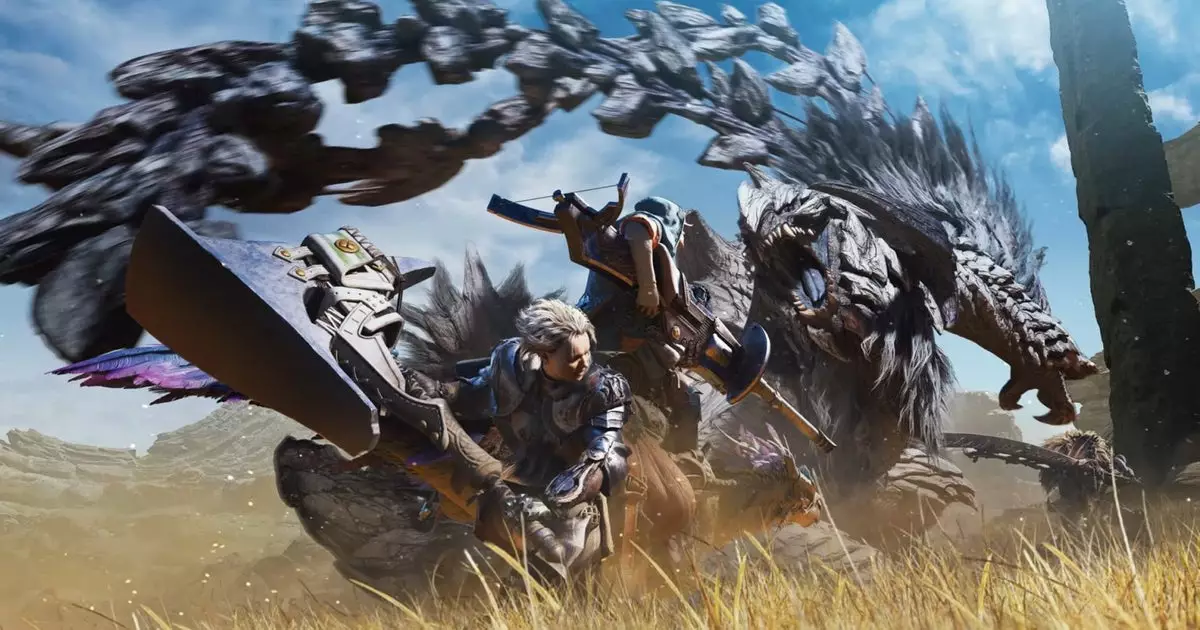The “Monster Hunter” franchise by Capcom has long captivated gamers with its rich ecosystems of mythical beasts and intricate combat systems. With the release of “Monster Hunter: Wilds,” players are once again thrust into a world brimming with danger and fantastical creatures. One of the major components of this installment is the introduction of new tinctures based on wyverns, toad monsters, and arachnids, which adds depth to the existing gameplay mechanics. However, a critical examination of this upgrade reveals that under the surface, the weapon types remain largely unchanged.
While “Monster Hunter: Wilds” boasts an assortment of aesthetically appealing weapons that come with enhanced move sets, the fundamental weapon categories will feel familiar to seasoned players. A nostalgic undertone resonates through the game as many weapons echo those found in earlier titles like “Monster Hunter Freedom 2,” which debuted in 2007. New introductions, notably the Insect Glaive from “Monster Hunter 4,” provide some excitement, but the developers have decided to prioritize refining existing weaponry over inventing entirely new types.
Yuya Tokuda, the director of “Wilds,” has stated that the philosophy behind weapon design is more about enhancement than expansion. The challenge lies in creating a 15th weapon type that complements the existing arsenal of 14 weapon categories, which includes the straightforward Greatsword and the more complex Hunting Horn, without treading on the toes of established mechanics. Tokuda emphasizes the difficulty of understanding the unique role that a new weapon would play while maintaining a balanced experience.
Every new release in the “Monster Hunter” series usually involves recalibrating existing weapon types to offer players new strategies and flexibility during combat. Takada reflects on this process and suggests that the effort it takes to create fresh weapon designs could be better allocated towards refining existing weapons. Each title grants players a deeper understanding of these weapon categories, enabling them to explore advanced combos and maneuvers, thereby introducing substantial complexity into the gameplay.
Not only do players require a robust set of weapons, but they also seek an evolving challenge. In “Wilds,” the balance between mastering existing weapons and revisiting beloved gameplay from “Monster Hunter: World” and its Iceborne expansion becomes paramount. As players delve deeper into the mechanics of each weapon, they quickly realize that their skillsets need to adapt to these nuances.
What sets “Monster Hunter” apart from other action-centric games is that weapon designs stem from the anatomy of the creatures that players hunt. This inherently gives each weapon a distinct flavor and purpose, grounded within the game’s lore and environment. The imaginative potential for weapon creation is staggering, leaving the possibility for far-reaching design avenues and creativity.
One can’t help but wonder if Capcom considered isolating their design teams, challenging their blacksmiths to push the envelope further into the realm of the surreal. Can you envision a wyvern wielding balloon-like anatomy, or perhaps a creature comprised almost entirely of geometric shapes? A weapon forged from a dinosaur that exists only in silhouette? The eccentricity of these ideas would undoubtedly elevate the crafting system into unparalleled territory, extending the limits of traditional weapon forging.
As “Monster Hunter: Wilds” unfolds, the delicate balance between innovation and tradition becomes increasingly apparent. While players are tasked with engaging in an old but beloved formula, it remains crucial for Capcom to continue revitalizing the existing framework while remaining open to new inspirations. The trade-off between stability and novelty is a continual dance that the franchise must engage in to maintain its enthralling allure. As fans, we find ourselves not only anticipating fresh weapon types but cheering on the complex interactions and evolutions that already engage us so deeply.

